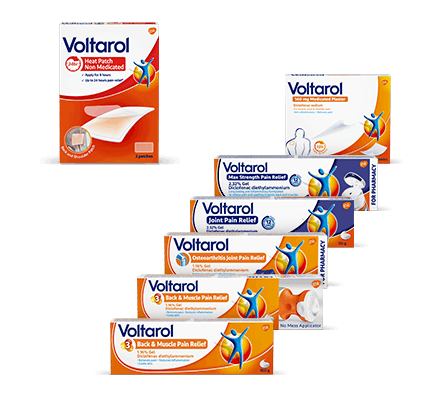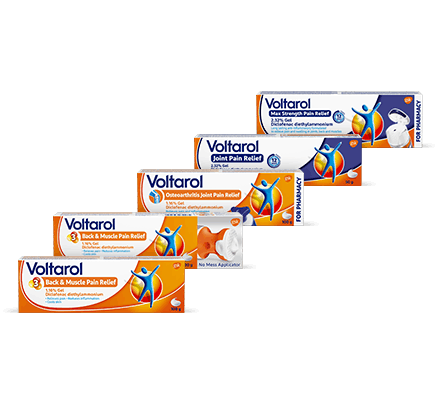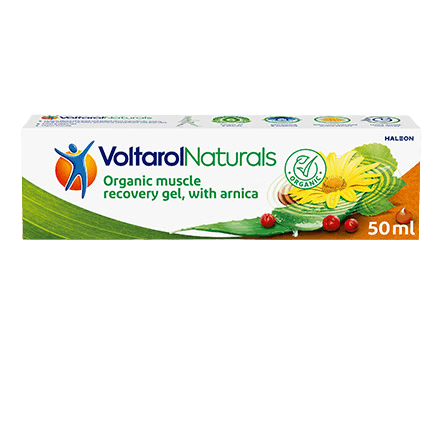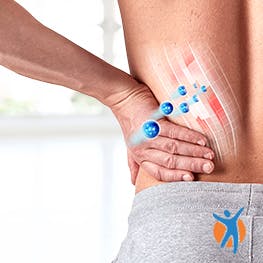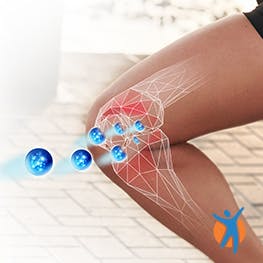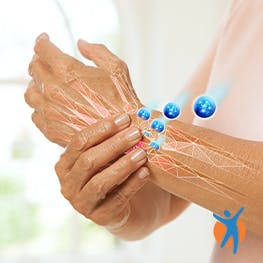
SHARE THIS ARTICLE:
You’re not alone. Worldwide, lower back pain causes more disability than any other condition. But don’t despair. Most people start to get better within just a few weeks. And there are plenty of treatments that can help during this time, so you can stay active and get on with life as normal.
What is lower back pain?
Lower back pain is when you feel the pain in the part of your back between the bottom of your ribs and the top of your legs. The pain may be a dull, constant ache or a sudden, sharp pain that makes it difficult to move around. You might find that the pain is worse in the morning compared to at night, and it may ease, or get worse, when you move into different positions.
Lower back pain may be acute, where your symptoms last less than three months, or (less often) it can become chronic if they last longer than this.
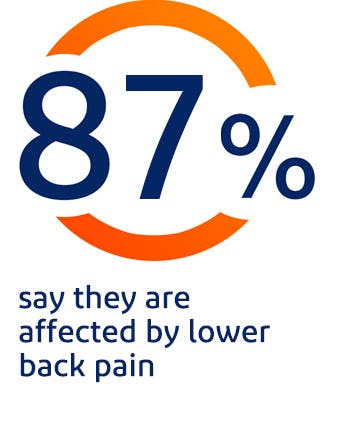
What causes lower back pain?
This can vary. More often than not, you pull your back from something like lifting furniture or twisting awkwardly; the pain isn’t from any underlying disease, but risk factors like obesity and physical inactivity also play a key role. The medical term for this is non-specific back pain. If you injure your back in this way, the soft tissues become inflamed. This inflammation causes pain, and you might get muscle spasms. This explains why anti-inflammatory medicines such as diclofenac, the active ingredient in Voltarol, can be effective at reducing back pain. See the article All about back pain for more details on pain relief for back pain.
Less often, back pain is caused by something ‘specific’, such as a problem with a vertebrae (a disc between two bones in your spine) or a problem with a nerve around your spine.
Some things can increase your risk of getting lower back pain. These include:
...
- Obesity. The extra weight can put a strain on your back.
- A sedentary lifestyle where you don’t do any or much physical activity. This can make your abdominal muscles weak, and your spine less stable.
- Your job – if it involves heavy lifting, for example. Stress can also cause muscle tension.
- Uncomfortable shoes. It’s possible that your shoes might affect the way you stand and walk and contribute to back pain.
How to treat lower back pain?
The best approach to dealing with back pain is usually to keep moving so you don’t stiffen up and prolong your symptoms. Doctors often prescribe exercise as a treatment for lower back pain. You can do exercises at home too, which may help to ease your symptoms.
Please note that by clicking on the "Shop now" and "Share" links above, you will be leaving the Voltarol site and moving to an external website which is independently operated and not managed by Haleon. Haleon assumes no responsibility for any of these external websites.
Pain-relieving medicines
Pain-relieving medicines can help you get on with your everyday activities while you recover.
There’s a range of pain-relieving products out there. To decide which is best for you, it may help to learn a bit about pain, and what happens in your body in the article: Understanding the difference between acute and chronic pain.
Voltarol Back & Muscle Pain Relief 1.16% Gel is a topical medicine that works in three ways: it relieves pain, reduces inflammation, and so helps speed up recovery. It brings targeted, local relief for pain and swelling (inflammation) in the back and neck. The active ingredient in Voltarol is a non-steroidal anti-inflammatory drug (NSAID) called diclofenac. Diclofenac works to inhibit prostaglandin synthesis (substances in the body that cause pain and inflammation). By reducing their amounts, diclofenac helps to relieve pain and reduce inflammation.
Ask a pharmacist or your GP if you would like advice about what would be the best treatment for you. In partnership with your pharmacist or doctor, you can treat your pain to help you get back on track for the active life you want.

SHARE THIS ARTICLE:
Treatment by pain type
Learn all about the causes, symptoms, and pain treatments for the type of pain you’re experiencing so you can get back to doing those little things that bring you joy.


